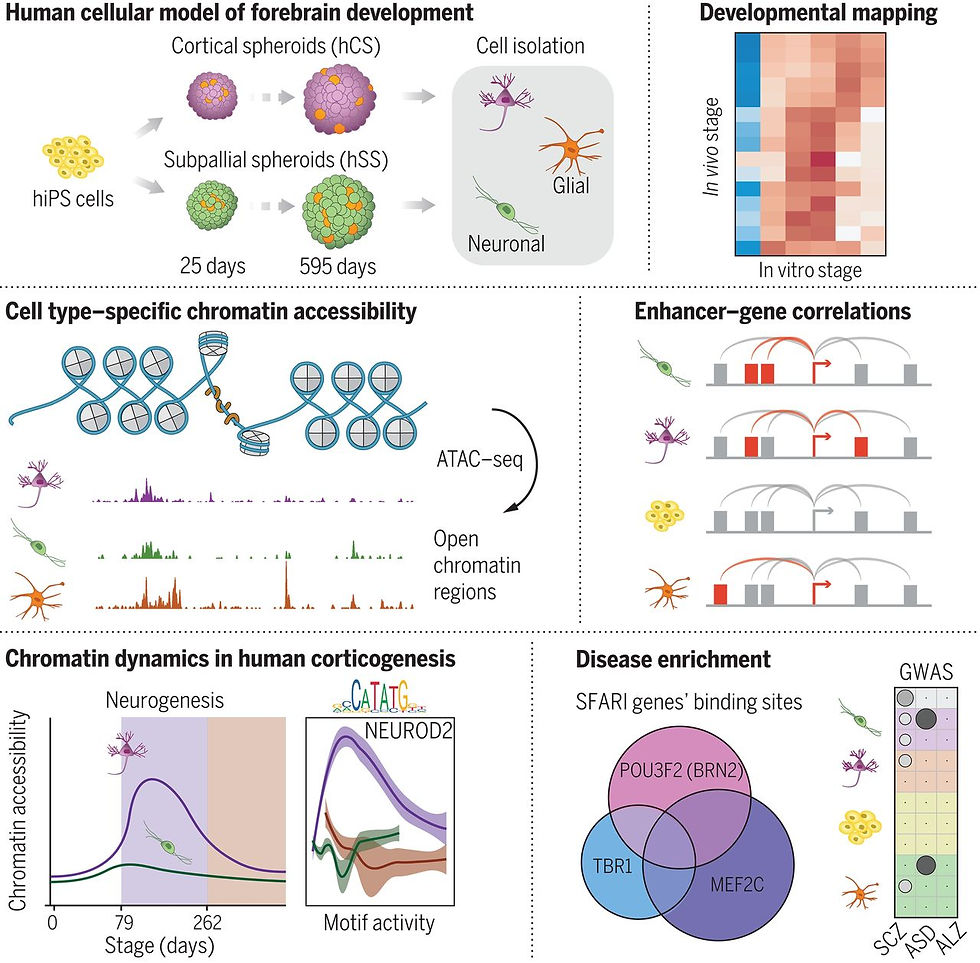Modeling the accessibility of chromosome dynamics in human forebrain development
- kübra:)

- Dec 15, 2020
- 1 min read
To map the regulatory activity underlying cellular processes involved in forebrain development, they created an accessible chromatin map in Human three-dimensional forebrain organoids.
They sampled glial and neuronal lineages from dorsal or ventral forebrain organoids for 20 months in vitro for corticogenesis. In brain tissue, active chromatin sites have been observed in organoids at different stages of development. They used this to map genetic risk for the disease and investigate evolutionary conservation. They also integrated chromatin accessibility with transcriptomics to identify the presumed enhancer-gene connections and transcription factors that regulate human corticogenesis. It often provides information about gene regulatory dynamics in previously inaccessible stages of human forebrain development1.
Corticogenesis is the process by which the cerebral cortex of the brain is formed during the development of the nervous system.
Using samples of primary brain tissue as well as long-term 3D neural differentiation of stem cells, they found that organoids were internally exposed to chromatin state transitions in vitro, which are closely related to human forebrain development in vivo. Taking advantage of this platform, they identified epigenetic changes driven by specific transcription factors and discovered a dynamic chromatin remodeling period during human cortical neurogenesis. Finally, they nominated several key transcription factors that could coordinate overtime to drive these changes and map cell-type disease-related variations over time and in certain cell types.







Comments